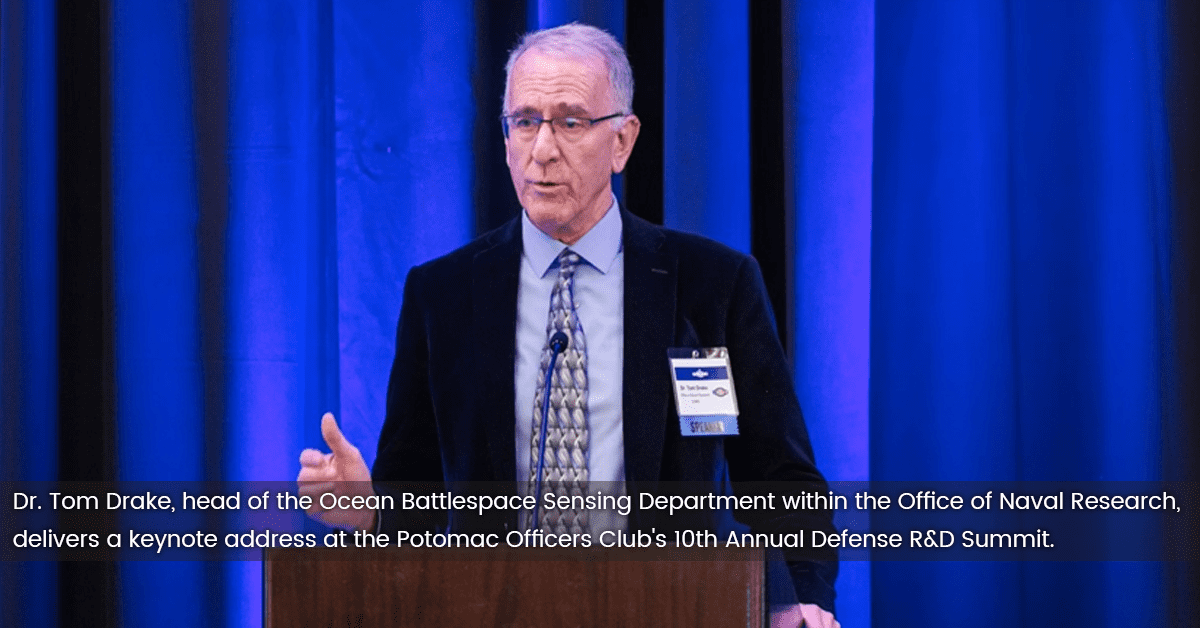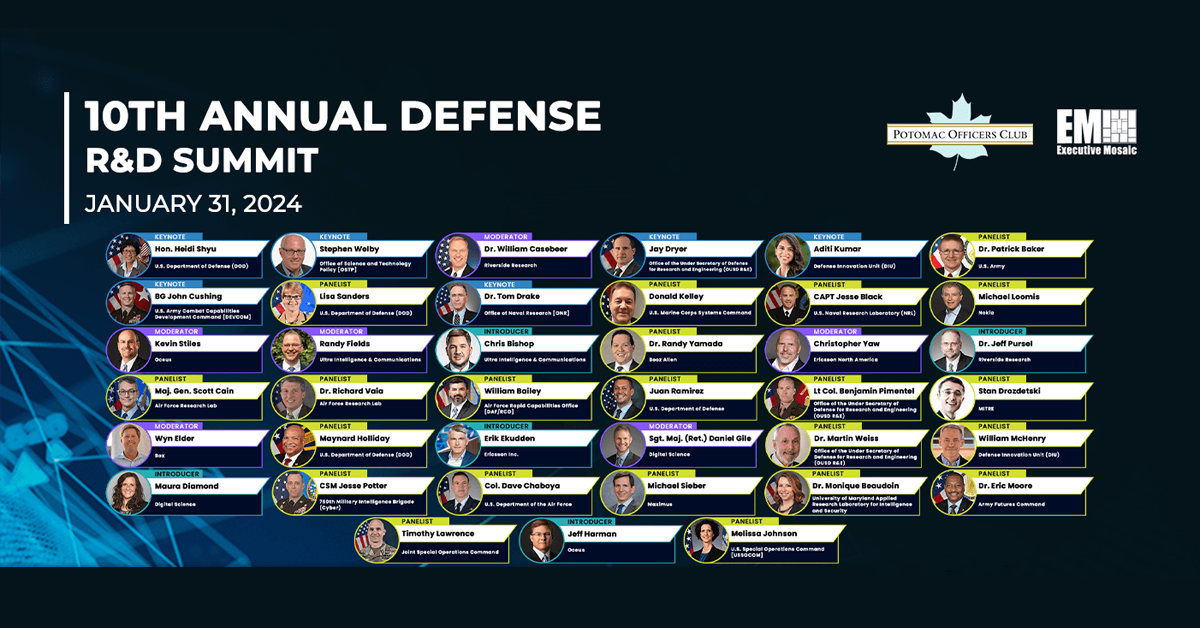The Office of Naval Research is responsible for a variety of science and technology programs intended to deepen the Navy’s capabilities, and according to Dr. Tom Drake, head of the agency’s Ocean Battlespace Sensing Department (Code 32), ONR is currently working on many new technologies and leveraging novel approaches to research and development.
One area of priority for the agency is the Arctic, where Drake said ONR has been “building the capability for persistent under ice presence for more than a year.” In doing so, the office is utilizing technologies like REMUS, an autonomous underwater vehicle with surveillance and reconnaissance capabilities. REMUS was created as a means to “keep the man out of the minefield,” and since the first model was produced, ONR has added new capabilities, such as sonars and magnetometers, to the vehicle.
The office is also harnessing stations below the region’s ice and ice piercing buoys with communications capabilities, Drake noted in his keynote address at the Potomac Officers Club’s 10th Annual Defense R&D Summit on Wednesday.


“The Arctic is probably the fastest warming part of the world,” said Drake. He emphasized the significance of understanding what this means for military operations.
“There is a lot of fresh water up there. There are lenses that we didn’t expect before that allow acoustic propagation that we didn’t know about. Then there is the climate change aspect, contributing to that part of the story,” he added.
To accelerate technology development, the ONR is leveraging programs known as “innovative Naval prototypes.” These standalone projects are designed to showcase “the art of the possible” through prototype building before they are handed off to a program of record. One of these initiatives, Drake shared, developed a large-diameter unmanned underwater vehicle to “compliment” ONR’s current work with submarines.
The office is also exploring future uses of one of its legacy technologies, the Floating Instrument Platform, or FLIP. Originally developed in 1962, FLIP is a 355 foot long platform that can turn itself into a large spar buoy resistant to significant waves, making it “a perfect platform to put sensors on.”
Though FLIP was retired in August, Drake said ONR realized that it “may have a second life after all.”
A core part of the office’s approach to R&D is “scientific diplomacy.” Drake said ONR has a “science to science” connection with Vietnam and has conducted joint basic research projects with the nation. According to Drake, ONR has also worked extensively with the Philippines, Taiwan and Indonesia and has collaborated with India through a program in the Bay of Bengal.


Don’t miss the Potomac Officers Club’s next event, the Workloads at the Tactical Edge Forum on Feb. 28. At this event, public and private sector experts will come together to look at defense technology from a different angle: edge operations. To learn more and register to attend the forum, click here.





